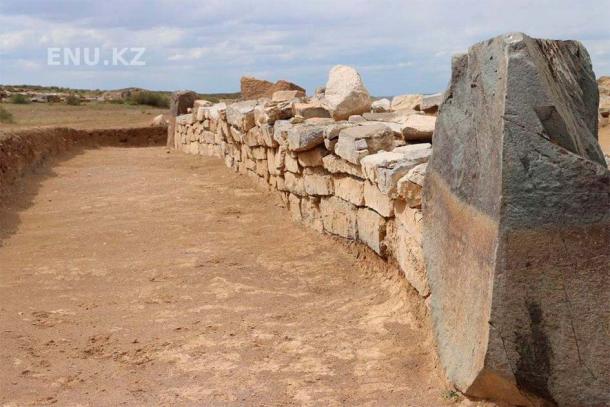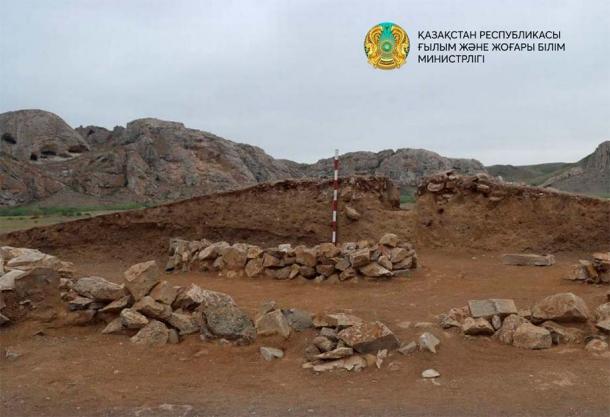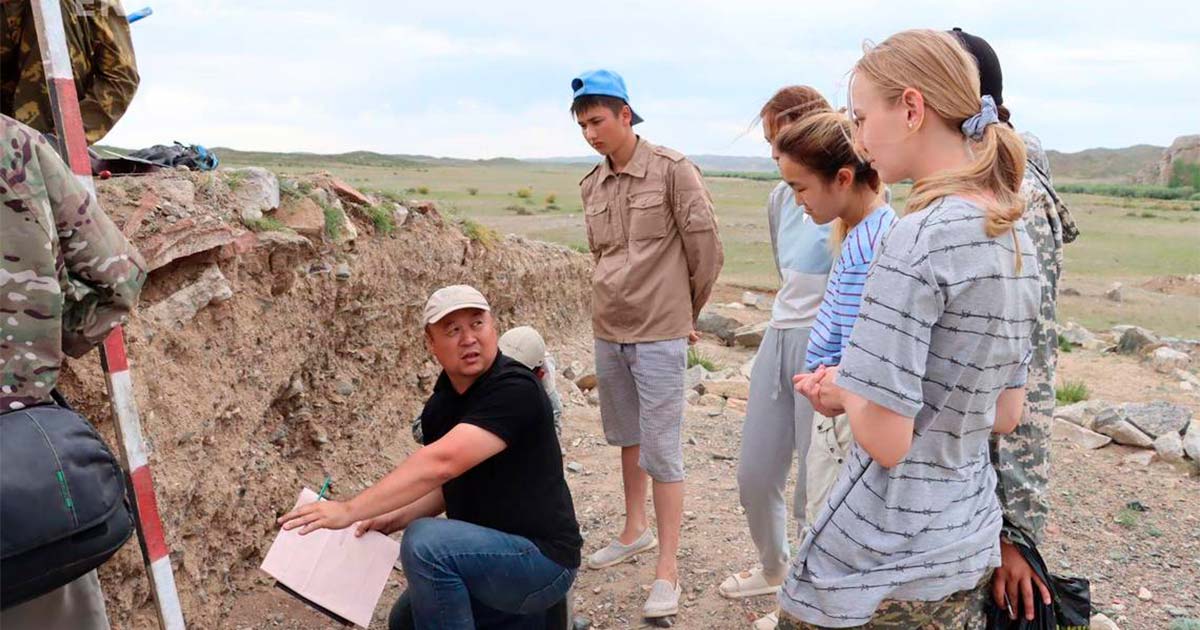4,000-Year-Old Bronze Age Pyramid Found in Kazakhstan Is First Ever on Asian Steppe!
A 4,000-year-old Bronze Age pyramidical structure with links to a horse cult has been uncovered in the ochre-tinted earthen steppes of Kazakhstan. The culmination of almost a decade of research and excavation, this large-scale steppe pyramid in Kazakhstan—which dates back to the 2nd millennium BC—languished in relative obscurity for countless centuries. Nothing like it has ever been discovered in the Central Asian steppes, making it an especially exciting find.
The Pyramid in Kazakhstan: A Geometric Marvel and an Equestrian Cult?
This carved stone edifice, possessing an air of sophistication and considerable proportions, has finally had its veil of anonymity lifted, with archaeologists diligently excavating a segment of the Kyrykungir monumental and funerary complex in Toktamys. As announced in a press release by the L. N. Gumilyov Eurasian National University on August 8, 2023, the pyramid in Kazakhstan traces its origins to an illustrious Bronze Age, with its symmetrical proportions speaking volumes about the geometric precision of its ancient architects.
- Ancient Geoglyphs of Kazakhstan: The Mysterious Markings in Danger of Destruction
- Archaeologists Uncover a Prehistoric Step Pyramid in the Steppes of Kazakhstan
“The steppe pyramid is built with great precision, it is hexagonal,” explained Ulan Umitkaliyev, Head of ENU’s Archaeology and Ethnology Department, in a press release. “There are thirteen meters and eight rows of stones between each face. It is a very sophisticated complex structure with several circles in the middle. The exterior walls of the structure of this complex are dominated by images of various animals, especially horses.”
Excavations have been taking place at the site of the pyramid in Kazakhstan since 2014. Previous archaeological digs have unearthed groupings of sepulchral hillocks originating from the Hun (4th-6th century AD) and Saka (mid-2nd century BC to mid 1st century AD) periods. These burial sites have revealed an assortment of mortuary contents, encompassing ceramic containers, culinary tributes and intricately fashioned bronze beads.

One side of the pyramid in Kazakhstan, each section is adorned with a block stone. (L. N. Gumilyov / Eurasian National University)
Ancient Architecture and Artifacts at Pyramid in Kazakhstan
The pyramidical structure possesses a striking hexagonal form, with each face spanning a length of approximately 42 feet (12.8 meters). A glimpse at the photographs shared by the Ministry of Science and Higher Education of Kazakhstan shows that each terminal of the monumental wall is adorned by a grandiose upright black stone whose flattened facade faces outwards to the world beyond. Meanwhile, in between these resolute markers, a different kind of rock was used to create an imposing exterior wall.
An assortment of other relics was unearthed too – fragments of pottery, gold earrings and other adornments. Umitkaliyev described these in conjunction with the pyramid as a shining example of “the pyramid’s former role as the pulsating heart of ancient cultural expression.” Another snapshot shared by the Ministry documented a less immaculately conserved stretch of the pyramid in Kazakhstan, revealing a tableau of dilapidated walls.
“Findings in excavations, ceramics, female gold earrings and other jewelry indicate that this Bronze Age was the center of culture in ancient times. This means that even at that time the cult of the horse was extremely high, as evidenced by the discovery of horse bones around the stone building,” stated Umitkaliyev. “There are also images of camels,” he added.

A cross-section of the pyramid which was unearthed in Kazakhstan. (Kazakhstan’s Ministry of Science and Higher Education)
The Bronze Age in the Eurasian Steppe: A Culturally Rich Era
Situated in Toktamys, some 420 miles (676 km) southeast of the bustling capital Astana, this archaeological site is the gift that keeps on giving. It provides some missing pieces to the larger jigsaw of the Bronze Age civilizations in the Eurasian steppe. The tribes that inhabited these regions were responsible for many landmark achievements, including the transport of languages (the Indo-European languages), foods, ideas and other cultural symbols across the ancient Silk Routes.
- Touching 4,000-Year-Old Royal Double Burial Found in Kazakhstan
- Kazakhstan Valley Filled with Giant Balls Has Geologists and Fringe Scientists Butting Heads
The Eurasian steppe played a significant role in the Bronze Age, a period characterized by the widespread use of bronze for tools, weapons and other artifacts. The steppe region, which stretches from Eastern Europe to Asia, served as a conduit for cultural exchange, trade and the movement of people.
The steppe was home to various nomadic and semi-nomadic cultures that relied on pastoralism (animal herding) as a primary means of subsistence. These cultures included the Yamnaya, Andronovo, and Srubna cultures in Eastern Europe and Central Asia, known for their expertise in horse domestication, which facilitated mobility and warfare. The steppe cultures also had interactions with sedentary civilizations located on the periphery of the steppe, such as the Sumerians, Akkadians and later the Persians and Chinese.
Top image: Archaeologists with 4,000-year-old pyramid remains in uncovered in Kazakhstan. Source: L. N. Gumilyov / Eurasian National University
By Sahir Pandey
References
ENU. 08 August 2023. “ENU scientists have discovered an ancient pyramid” in Eurasian National University. Available at: https://enu.kz/en/news/497
Milligan, M. August 2023. “Archaeologists Uncover Bronze Age Pyramidal Structure in the Eurasian Steppe” in Heritage Daily. Available at: https://www.heritagedaily.com/2023/08/archaeologists-uncover-bronze-age-pyramidal-structure-in-the-eurasian-steppe/148190
Pflughoeft, A. 2023. “Ancient pyramid — decorated for ‘cult of the horse’ — unearthed in Kazakhstan” in Miami Herald. Available at: https://www.miamiherald.com/news/nation-world/world/article278062057.html

















